
The Labourers in the Vineyard, by Margaret M. Giles (1868-1949). 1912. Now in the Brasserie of Regent's University, London. The segmented bas-relief depicts the New Testament parable of the "Workers in the Vineyard," only told in Matthew 20, 1-16, in which the householder hires the workers at different times of the day, as the need arises, but pays them all the same (agreed) wage at the end. The ones who have worked hard for many hours complain that they are given no more than those who only came later. However, the householder rebukes them, saying that he has paid them all the agreed wage, and the ones he hired earlier should not mind his generosity towards the others: "So the last shall be first, and the first last: for many be called, but few chosen” (20, 16).
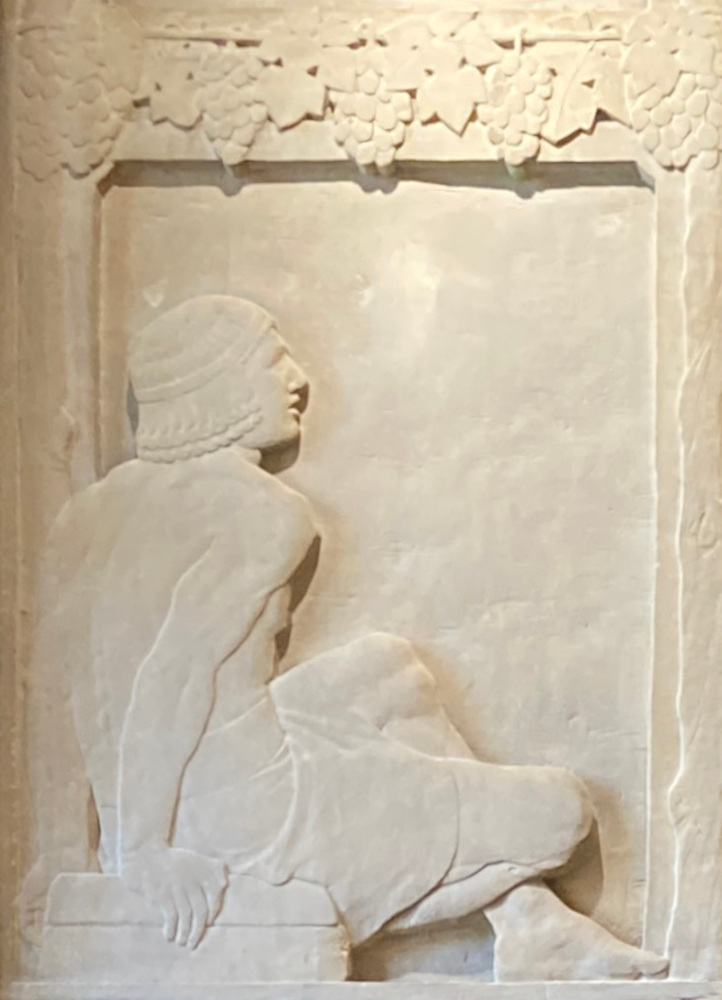
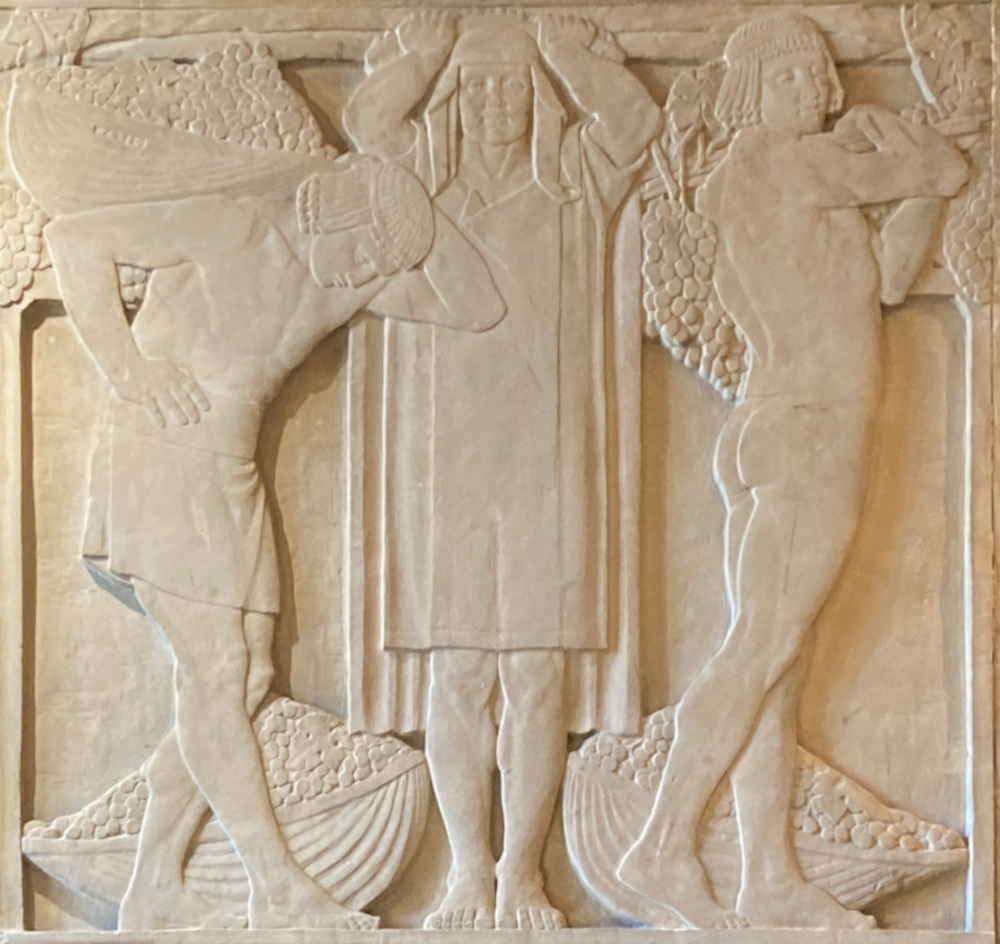
Giles shows the scene in the vineyard. On the left, one man waits, seated. In the large central panel three others, in different poses and differently attired, bring back their harvested grapes. Also shown are the fruits of other workers' labours, in the laden panniers in the lower foreground.
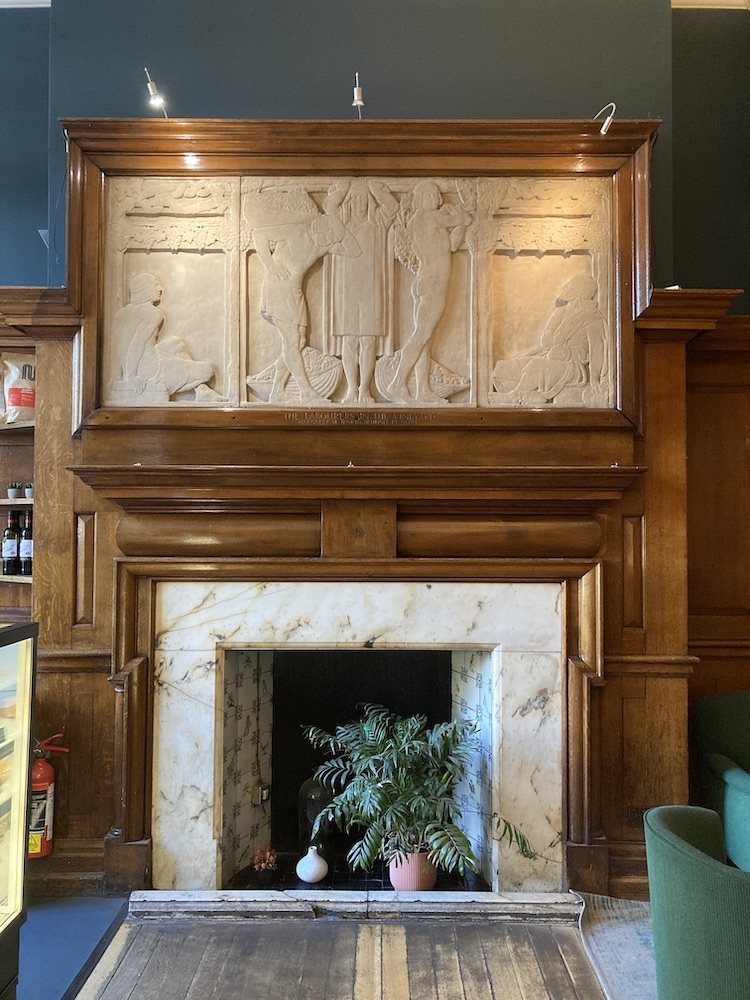
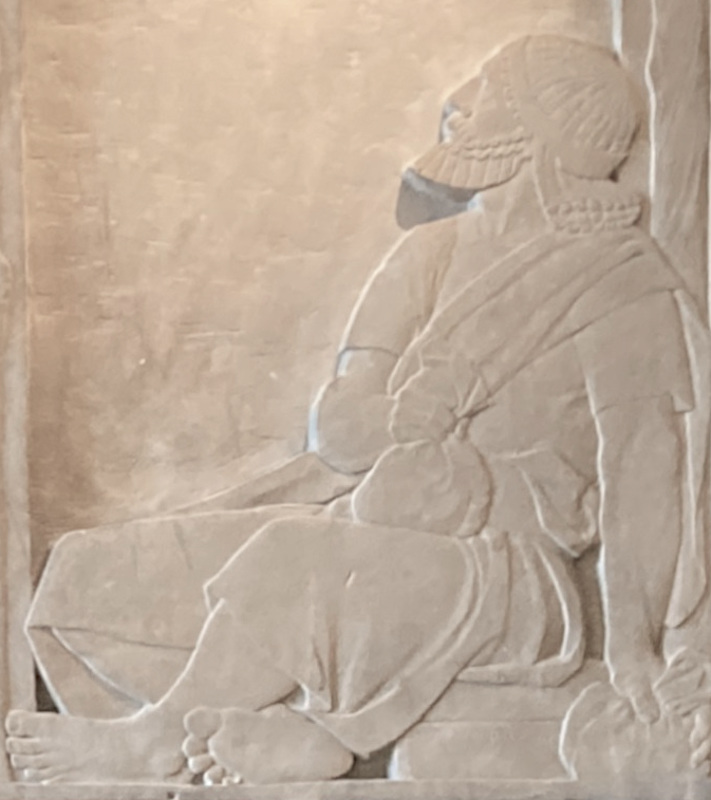
Left: The relief might have been intended for an ecclesiastical context, but is now set into the overmantel of the fireplace, making a very fine feature in the room. Right: On the right of the relief sits the steward, whom the householder has called to make payment to the men: an older-looking man, he has his money-bags ready.
While indicating the worth of manual labour and the riches of the nature, the pronouncement at the end of the parable reveals that its lesson is primarily about faith: it is never too late to respond to "the call" and reap the reward for doing so. In a university setting, as currently placed, it points appropriately to the value of setting to work, at any stage, for future benefit.
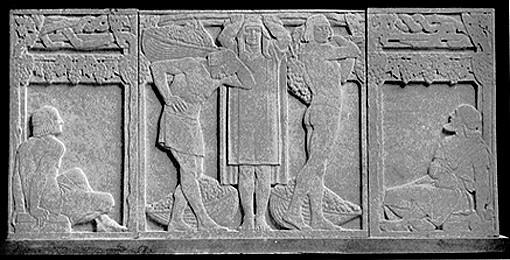
This scanned full-page image from the Academy Architecture and Architectural Review of 1912 (p. 84) indicates that the relief was admired at the time. Whatever its expected destination, it certainly looks splendid in its present setting, and reveals Giles's versatility. In contrast to her celebrated statuette Hero, with its "complex, spiralling composition" (Beattie 196), it has angular, stylised modernistic lines such as those found in the reliefs of Ernest Gillick, one of which (the gilded Panel of Muses behind the main figure of "Philosophy" at Emmanuel College, Cambridge) is featured in the same volume of the journal (p. 70).
Photographs by Dr Deborah Schultz, Senior Lecturer in Art History at Regent's University, London; scanned image by George P. Landow. Text by Jacqueline Banerjee. [You may use these images without prior permission for any scholarly or educational purpose as long as you (1) credit the photographer or person who scanned the image and (2) link your document to this URL or credit the Victorian Web in a print one.]
Bibliography
Academy Architecture and Architectural Review Vol. 41 (1912): 84. Internet Archive. Web. 16 May 2025.
Beattie, Susan. The New Sculpture. New Haven: Yale University Press, 1983.
Landow, George P., "Margaret Giles's Hero and the Sublime Female Nude." Gender, Voice, and Image in Victorian Literature and Art, ed. Antony H. Harrison and Beverly Taylor. DeKalb: Northern Illinois University Press, 1992. [full online version]
Last modified 14 January 2006